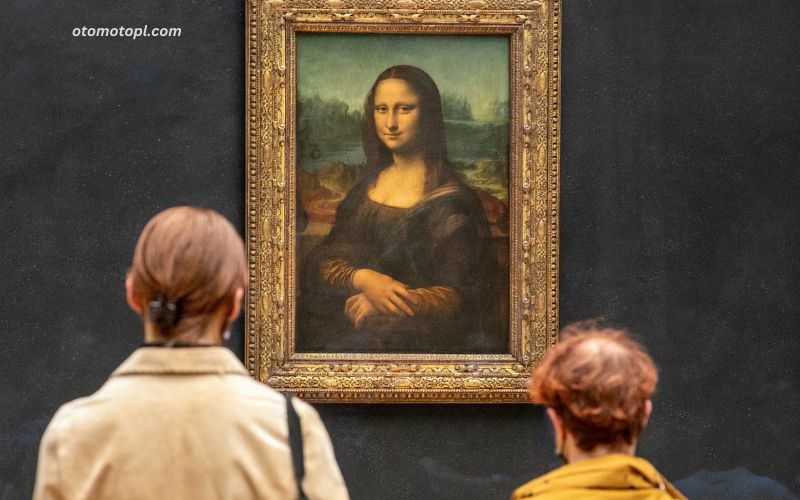The Mona Lisa, painted by Leonardo da Vinci in the early 16th century, is one of the most celebrated works of art in history. Known for her enigmatic smile and captivating gaze, the painting has intrigued viewers for centuries, making it a focal point of art history, cultural discussions, and scholarly analysis. In this article, we will explore the Mona Lisa’s background, artistic significance, techniques used in its creation, and its impact on art and culture.
Historical Context
The Mona Lisa, also known as La Gioconda, was painted between 1503 and 1506, during the Italian Renaissance—a period marked by a resurgence of interest in classical antiquity and humanism. Leonardo da Vinci, an Italian polymath, was at the forefront of this movement. His mastery of various disciplines, including painting, science, and engineering, set him apart as one of the greatest artists of all time.
The painting is believed to be a portrait of Lisa Gherardini, a Florentine woman, commissioned by her husband, Francesco del Giocondo. The name “La Gioconda” translates to “the joyful one” in Italian, which reflects the sitter’s surname and the painting’s serene expression.
Artistic Techniques
Leonardo da Vinci employed several innovative techniques in the creation of the Mona Lisa, contributing to its status as a masterpiece:
1. Sfumato
One of the defining features of the Mona Lisa is the technique known as sfumato, which involves the subtle blending of colors and tones. This technique allows for soft transitions between light and shadow, creating a realistic portrayal of the human face. In the Mona Lisa, sfumato is evident in the delicate rendering of her skin and the gentle contouring of her features.
2. Chiaroscuro
Chiaroscuro, the use of strong contrasts between light and dark, is another technique that da Vinci masterfully applied in the Mona Lisa. The lighting in the painting highlights the subject’s face while casting soft shadows that add depth and dimension. This creates a three-dimensional effect that enhances the viewer’s sense of intimacy with the subject.
3. Composition
The composition of the Mona Lisa is both balanced and harmonious. Da Vinci placed the figure slightly off-center, drawing the viewer’s eye toward her captivating gaze. The use of a pyramidal structure in her pose and the subtle curves of her clothing contribute to a sense of stability and tranquility in the composition.
Symbolism and Interpretation
The Mona Lisa is rich in symbolism, and various interpretations have emerged over the years:
1. The Enigmatic Smile
Perhaps the most famous aspect of the painting is the subject’s smile, which has been described as both inviting and elusive. This ambiguity invites viewers to contemplate her emotions and thoughts, creating a connection between the subject and the observer. Art historians suggest that the smile may represent the complexity of human emotion, embodying a sense of mystery that has fueled countless theories.
2. The Landscape
The background of the Mona Lisa features a dreamlike landscape with winding paths, bridges, and serene waters. This setting is often interpreted as a representation of the connection between humanity and nature. The landscape may also symbolize the journey of life, inviting viewers to ponder their own experiences and the passage of time.
3. Gender and Identity
The Mona Lisa has also sparked discussions about gender and identity. As one of the few surviving portraits of a woman from the Renaissance, it raises questions about the role of women in society during that time. The painting challenges traditional notions of femininity by portraying a woman who is both serene and enigmatic, reflecting the complexities of women’s identities.
Reception and Influence
Upon its completion, the Mona Lisa did not immediately achieve fame. It was not until the early 19th century that the painting began to gain widespread recognition. After being stolen from the Louvre in 1911 and recovered in 1913, the Mona Lisa became a symbol of artistic excellence and cultural significance.
The painting has influenced countless artists and movements throughout history. Its impact can be seen in the works of the Impressionists, Surrealists, and contemporary artists who have drawn inspiration from its composition, techniques, and themes. The Mona Lisa’s status as a cultural icon has only grown with time, making it a focal point of artistic discussions and interpretations.
The Mona Lisa Today
Today, the Mona Lisa resides in the Louvre Museum in Paris, where millions of visitors flock to see the painting each year. It is protected by bulletproof glass and carefully monitored to ensure its preservation. The painting’s fame has transcended the art world, appearing in popular culture, advertising, and various media.
The Mona Lisa’s enigmatic smile continues to captivate audiences, leading to numerous parodies and reinterpretations. From pop art to digital media, the painting has become a symbol of artistic achievement and cultural heritage.
Conclusion
The Mona Lisa is more than just a painting; it is a cultural phenomenon that embodies the beauty, complexity, and mystery of human existence. Through Leonardo da Vinci’s innovative techniques and profound understanding of the human experience, the Mona Lisa has secured its place as one of the most celebrated works of art in history. Its enduring legacy continues to inspire and provoke thought, ensuring that it remains a timeless masterpiece for generations to come.




